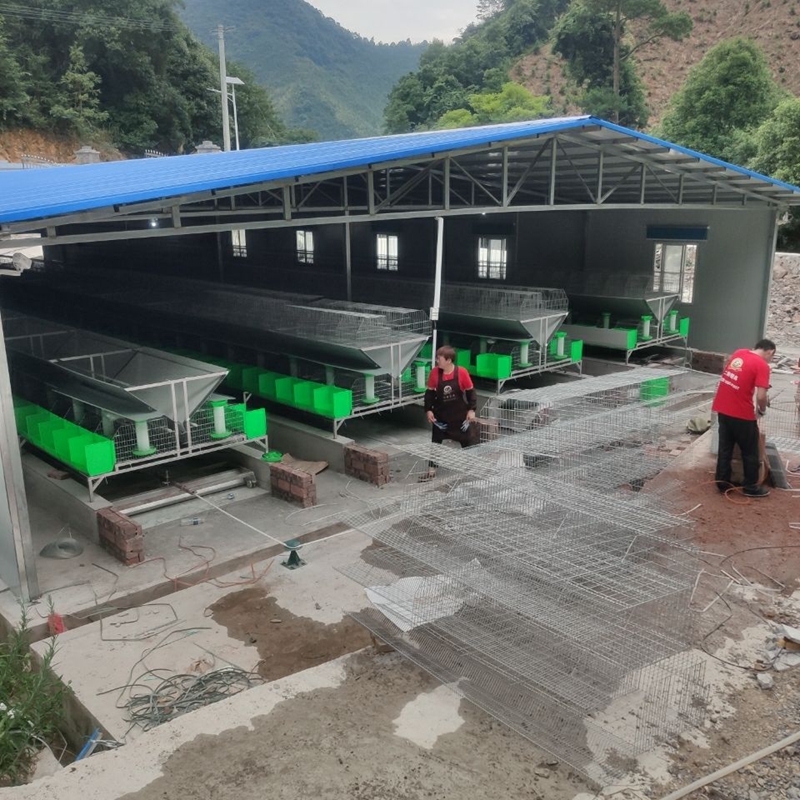Efficient Poultry Layer Cage Systems for Enhanced Egg Production and Animal Welfare
Nov . 01, 2024 03:54 Back to list
Efficient Poultry Layer Cage Systems for Enhanced Egg Production and Animal Welfare
The Role of Poultry Layer Cages in Modern Farming
Poultry farming has evolved significantly over the years, with technology and innovation playing a crucial role in increasing productivity and efficiency
. Among the various advancements, the introduction of poultry layer cages has transformed the way eggs are produced. These cages are designed to house hens in a controlled environment, optimizing their living conditions and enhancing overall egg production.Layer cages come in different designs, but their primary purpose remains the same to provide comfortable and hygienic housing for poultry. They allow for a systematic arrangement of hens, maximizing space and minimizing waste. In traditional farming setups, hens are often raised in a free-range environment, which can lead to several challenges, including disease management and inefficient use of resources. However, with layer cages, farmers can monitor and control environmental factors such as temperature, humidity, and lighting. These controlled conditions contribute to healthier birds, who produce a higher quantity and quality of eggs.
One of the significant benefits of layer cages is the improved biosecurity they offer. In a cage system, the risk of disease transmission is significantly lowered since birds are separated from one another and from their droppings. This isolated setting allows for better sanitation practices, which are essential in preventing outbreaks of diseases such as avian influenza and salmonella. Farmers can easily clean the cages and remove waste, ensuring the hens are kept in a clean environment, which is conducive to their health and egg production.
poultry layer cage

Moreover, layer cages enable farmers to optimize feed efficiency. Hens in cages are less active than their free-range counterparts, which means they require less feed to maintain their weight. This results in lower feed costs and increased profitability for farmers. Additionally, with the right nutrition and care, hens in layer cages can produce eggs year-round, contributing to a steady supply for the market.
However, the use of layer cages has also sparked debates surrounding animal welfare. Critics argue that confining hens to cages limits their natural behavior and may cause stress. As a response, many farms are transitioning to more humane practices, incorporating larger cages or colony systems that allow for more space and social interaction among hens. These systems aim to strike a balance between efficient production and the welfare of the animals.
In conclusion, poultry layer cages play a vital role in modern poultry farming. They enhance productivity, improve biosecurity, and optimize feed efficiency, contributing to the overall sustainability of the industry. While concerns regarding animal welfare remain, the evolution of cage systems continues to adapt, aiming for a future where both productivity and animal well-being are prioritized. As the global demand for poultry products rises, the challenge will be finding innovative solutions that meet consumer expectations while ensuring humane treatment of animals in the industry.
-
Hot Sale 24 & 18 Door Rabbit Cages - Premium Breeding Solutions
NewsJul.25,2025
-
Automatic Feeding Line System Pan Feeder Nipple Drinker - Anping County Yize Metal Products Co., Ltd.
NewsJul.21,2025
-
Automatic Feeding Line System Pan Feeder Nipple Drinker - Anping County Yize Metal Products Co., Ltd.
NewsJul.21,2025
-
Automatic Feeding Line System - Anping Yize | Precision & Nipple
NewsJul.21,2025
-
Automatic Feeding Line System - Anping Yize | Precision & Nipple
NewsJul.21,2025
-
Automatic Feeding Line System-Anping County Yize Metal Products Co., Ltd.|Efficient Feed Distribution&Customized Animal Farming Solutions
NewsJul.21,2025






